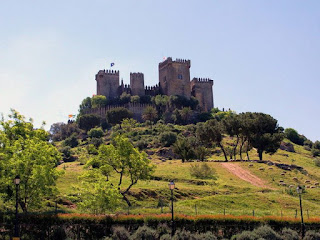What Was It?
In the year 711 the Muslims occupied almost all of Spain. Only the mountainous region of the North remained in the hands of the Spaniards. From there the Christian kingdoms set out to reconquer their territory. After the triumph of Covadonga, in the year 722, a slow but ruthless advance towards the south began. The kingdoms of Asturias, León, Navarra, Portugal, Castile y Aragon emerged. Finally, in 1492, at the time of the Catholic kings, the taking of Granada, the last Muslim stronghold, put an end to the reconquest.
How was society?
The distribution of the land that was being reconquered benefited the warrior nobility, who accumulated large possessions that they would dedicate above all to livestock. There were Muslims who remained in the Christian territories. They were called Mudejars and were engaged in agriculture and small industry. Also numerous in these areas was the Jewish community that was engaged in trade, loans and crafts. Muslims and Jews were as numerous in some areas as Christians.
What was the political situation?
Two great Christian kingdoms were already formed and settled: Castile and Aragon. In 1469, the marriage of Fernando of Aragon and Isabel of Castile manages to unify the peninsula, although each will maintain the reign over their regions of origin. The "Catholic Kings" incorporated Navarre and culminated the reconquest with the taking of Granada on January 2, 1492, the same year of Columbus' voyage.
The Beggining?
After the rapid Muslim conquest of most of the peninsula, nuclei of Christian resistance began to be organized in the northern mountains. Until the tenth century, these nuclei simply resist or occupy unpopulated areas. The Asturian nucleus was the main focus of resistance. In 722 (uncertain date, perhaps 718), a Visigothic noble, Pelayo, defeated Muslims in Covadonga. Alfonso II (791-842) establishes the capital in Oviedo. During his reign the tomb of Santiago is discovered, the origin of the great pilgrimage. The other Christian nuclei of the north were the navarro nucleus, the Aragonese nucleus and the Catalan nucleus.
The History?
The Reconquest corresponds to the period of the history of the Iberian Peninsula between the years 718 and 1492 (end of the kingdom of Granada). During this long period, Christian and Muslim kingdoms coexisted and fought in the peninsular territory. The Asturian kingdom reached the line of the Duero in the year 910 and moved its capital to León. Taking advantage of the Muslim weakness after the end of the Caliphate and the disintegration of the Taifas Kingdoms, León and Castile go beyond the Central Mountain Range and occupy the Tajo basin. Toledo was reconquered in 1085. After the brake imposed on the reconquest by the Almohad invasion, the advance towards the south was reactivated in the eastern kingdoms when Alfonso I of Aragon reconquered Zaragoza in 1118. While Portugal conquered Lisbon in 1147. After the interruption of the advance with the arrival of the almohades, little by little Castile-Leon managed to dominate the valley of the Guadiana and the steps of the Sierra Morena. This process culminated in the battle of Las Navas of Tolosa (1212), which definitively opened the Christian advance towards the valley of the Guadalquivir and Valencia. In the middle of the 13th century, only the Muslim redoubt of Granada remained until 1492.
What did the Muslims contribute to the Spanish culture?
The Muslims remained eight centuries in Spain. Thanks to his translations, great classics of antiquity spread and made great contributions in the field of agriculture, industry, mathematics, physics, chemistry and medicine. It was they who introduced the guitar to the peninsula. Islamic art and architecture can be seen in large works in the Al-Andalus region (Andalusia), such as the Alhambra in Granada.





